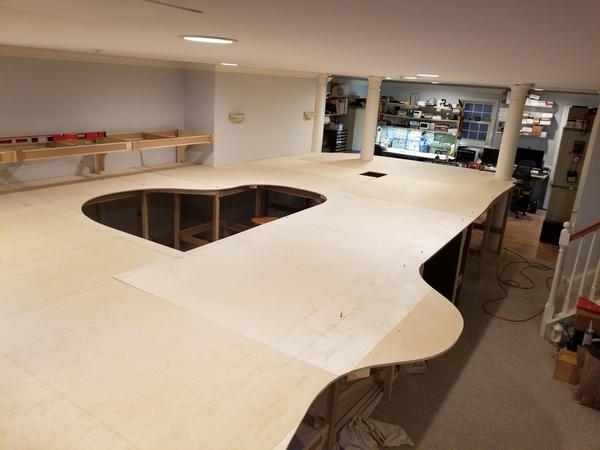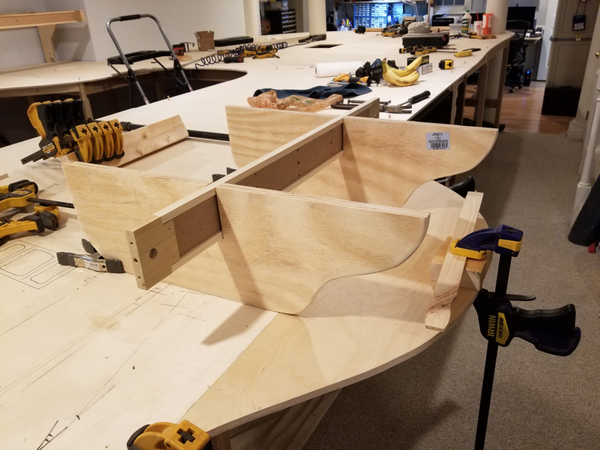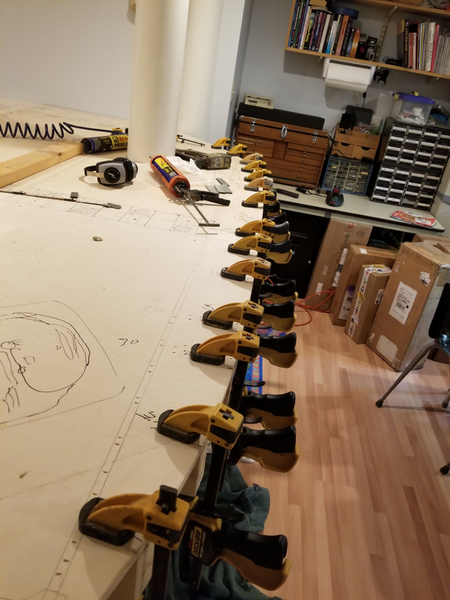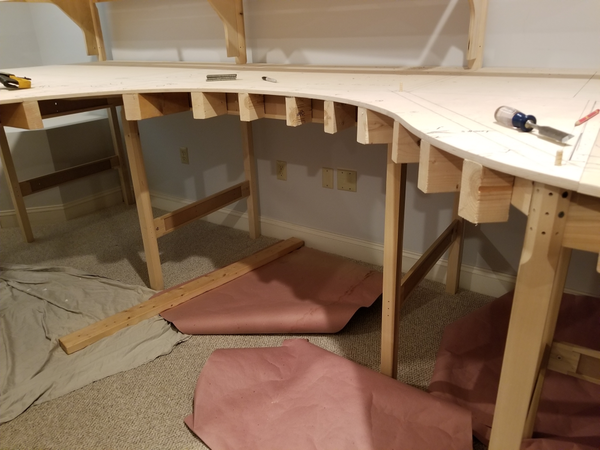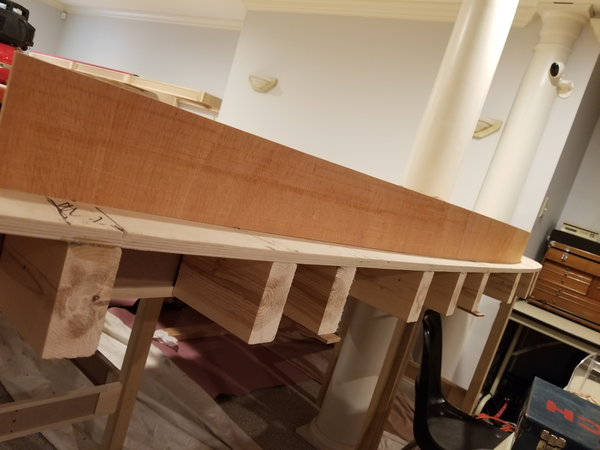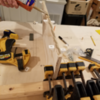Tom is responsible for anything that resembles furniture, I'm in charge of ransom cuts and hacks. ![]()
![]()
gunrunnerjohn posted:Joe, your stapler is way too pristine to be Tom's unit, his has put in a lot of miles!
Mine are from the later 80's. They have served me well. Many builds, too many to count. I oil regularly!
About half of mine needed rebuilds a few years back as they were leaking. I can't keep track of just how much work they've done. I do remember a disgruntled boss trying to damage one of mine over jealousy. He fired it into a furring strip attaching to tiled masonry. He claimed he was shooting for the grout but he was at least an inch over directly on the tile. I grabbed it away from him before it got damaged further. His nailer was right at his feet and he chose to grab mine. So the driver needed replacing early.
30+ years and it's still working!
"I'm in charge of ransom cuts and hacks. ![]()
![]() "
"
John, who or what are you hold ransom this week?![]()
![]()
Chris
LVHR
gunrunnerjohn posted:Keystone posted:Totally unplanned, but we noticed it after the wood was cut, so I had to get a couple of shots of it.
I know you love railroading, John, but everything has limits.... ![]()
gunrunnerjohn posted:
I like that, this is a really good one! A keeper! Now, if I could just figure out when all my bad judgement had been used...
Reminds me of another one from my working life... An Optimist: One who lacks experience.
This applied whenever sales had just gotten a large, new project and were all excited about it... which always preceded transfer to the operations department and discovery of the true scope of the project... reality would then set in that they were already in the hole before beginning. ![]()
RTR12, I like that one too, but for “ optimist “, I’d substitute “idealist”, but I completely understand your reference. 😝
Wow, it looks fantastic so far!
I actually agree with all the philosophizing! I think all of us are old enough to have learned from our mistakes!
Some more progress, we're putting the supports for the fascia on, and I've been crawling around tacking things down as well.
This is the support structure for the large bump-out "bubble" on the one side, it's made from 3/4" plywood. This is secured (very solidly) to the underside of the table top. Then 2x4 extensions to the edge of the table were added and fastened to the table and sides of these supports, they extend to the edge to support the first layout of the fascia.
Here's the start of the fascia supports on one end of the table, they're glued and stapled to the table top. The longer ones will also get additional support behind the benchwork I-beams to prevent any possibility of twisting there.
Here's a run of the fascia supports in place and ready for the bottom fascia layout to be attached.
Another section of the table, the strip on top is the bottom layout of the fascia that will be glued and tacked to the supports and table top. After the Homasote goes on the second finish fascia will cover this and also the edge of the Homasote.
Cruising on, can't wait! ![]()
Attachments
Your bench work is beautiful. It’s a shame you’re going to ruin it by putting a layout with trains on it.
One thing I've discovered about the Mianne benchwork, the method of attaching the plywood just by the legs is woefully inadequate for best noise suppression. Even with the higher quality multi-ply, the top doesn't lay firmly on the I-beams. I can just hear the vibration when things are running on the layout, that's not good. I'm tacking the top to each of the beams using that power stapler, the difference in both sound when you tap on the table and the overall rigidity of the structure is greatly improved. Turns out, I won't be using the brackets to attach the top at all, it's much more secure the way I'm going it.
romiller49 posted:Your bench work is beautiful. It’s a shame you’re going to ruin it by putting a layout with trains on it.
I like to view it as an "enhancement". ![]()
GRJ, you do really nice work. I’ve been wondering about track noise with the Mianne fasteners, so thanks for posting a comment about that.
Well, Tom is doing the nice work, I'm holding the tools. ![]()
The boards rattling on the I-beams is something I always thought would be an issue, and I figure to solve that one once and for all. We did sacrifice a piece of the benchwork shooting staples into it to make sure we didn't have a splitting issue. However, it seems the staples work with some pretty small pieces of wood without a splitting issue, I was just somewhat concerned and figured it was worth testing before doing the whole table.
An important consideration when driving staples is to not exceed the body into which you are anchoring the fasteners.
The 1/4" crown staples used for the deck attachment appear to have the exact same 1/4" crown as the staples used in fabrication of the Mianne beam ends.
Although this is a permanent layout, disassembly could be accomplished with a circular saw set at 1/2" for plywood or set 1" for plywood and Homosote running a chalk line parallel & adjacent to a cross member row.
Tom, I'm really hoping to never have to disassemble this one, that will be a project for my heirs! ![]()
![]()
I think one part of the issue with the leg fasteners for this layout is a lot of four foot spans, that's a lot of area to span without securing the deck to the bench structure in between.
John, earlier in this thread were you considering using rolled sill-plate foam as a possible sound deadener between the bench work & top? If so, did you try any and what was your opinion?
After having built very many layouts I have come to the conclusion that the only way to really quite an 0 gauge layout is to use a two rail format or run the three rail trains at a reduced speed.
My layout combines both two and three rail trains over Homsote. If I run the three rail trains at a reasonably slow speed they blend in with the two rail trains. If I run the three rail at normal model train speeds the sound overpowers all the two rail trains.
Fasteners of the deck material (plywood) through sill insulation will just transfer the vibrations.
Side thought:
One thing I have found is that the sound muffling laminate floor underlayment pad can reduce foot traffic noise tremendously. The biggest complaint in laminate flooring is the foot traffic noise level. Underlayment padding has come a long way in addressing that problem.
It would be interesting to glue down the underlayment pad then screw and glue down the Homosote then remove the screws after the adhesive has set up. In theory that may work well.
John, What is the length of the staples you are using? They must be huge to go through 1/2" plywood in to the Mianne.
After having built very many layouts I have come to the conclusion that the only way to really quiet an 0 gauge layout is to use a two rail format or run the three rail trains at a reduced speed.
My layout combines both two and three rail trains over Homsote. If I run the three rail trains at a reasonably slow speed they blend in with the two rail trains. If I run the three rail at normal model train speeds the sound overpowers all the two rail trains.
Fasteners of the deck material (plywood) through sill insulation will just transfer the vibrations.
Side thought:
One thing I have found is that the sound muffling laminate floor underlayment pad can reduce foot traffic noise tremendously. The biggest complaint in laminate flooring is the foot traffic noise level. Underlayment padding has come a long way in addressing that problem.
It would be interesting to glue down the underlayment pad then screw and glue down the Homosote then remove the screws after the adhesive has set up. In theory that may work well.




